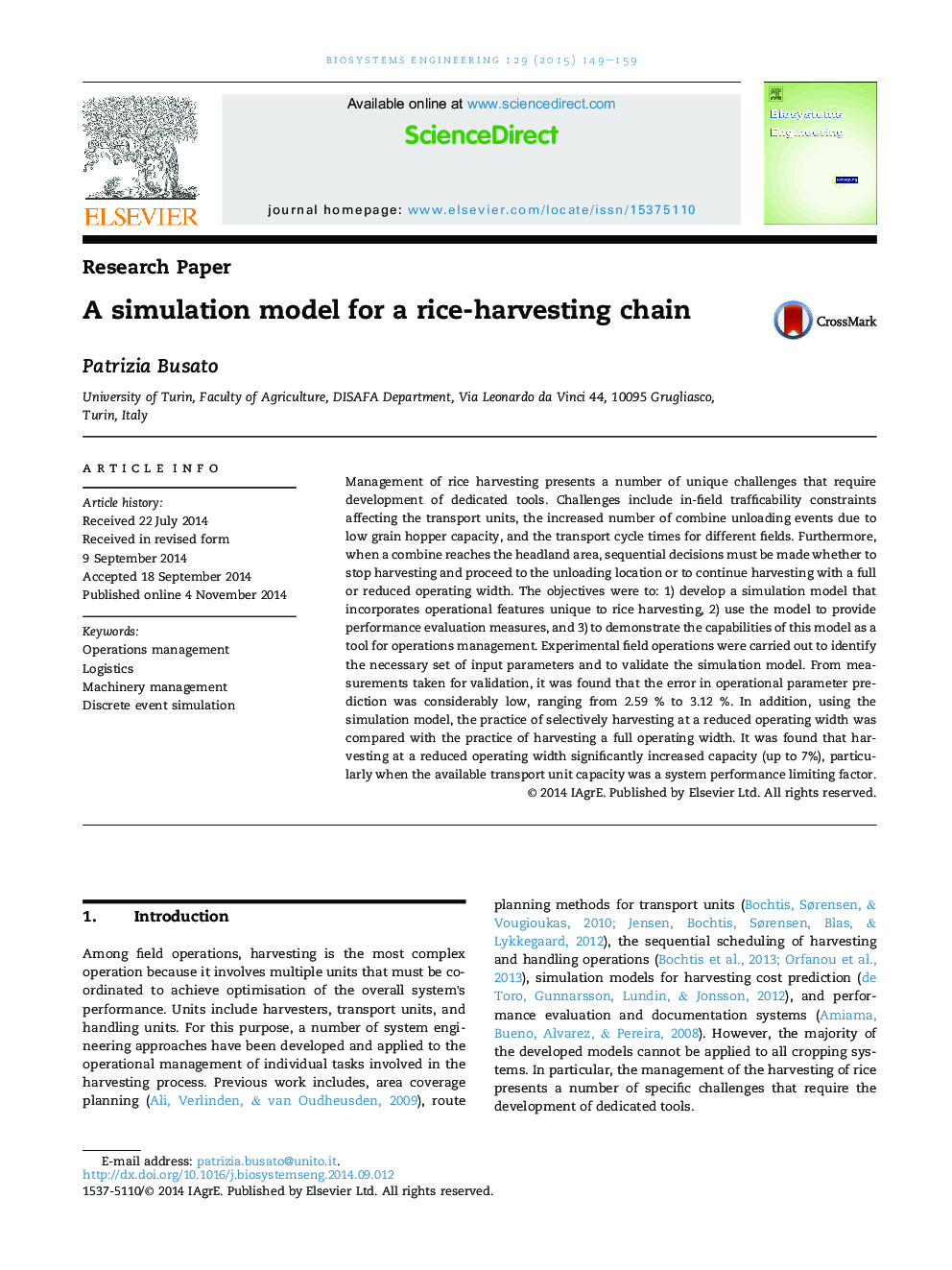| کد مقاله | کد نشریه | سال انتشار | مقاله انگلیسی | نسخه تمام متن |
|---|---|---|---|---|
| 1711060 | 1519532 | 2015 | 11 صفحه PDF | دانلود رایگان |
• A simulation model for performance evaluation of rice harvesting was developed and tested.
• The model can be implemented as an operations management tool for rice harvesting.
• The practice of implementing a reduced harvesting width in selected passes increases area capacity.
• The error in predictive capabilities of the model is low when compared to actual field operations.
Management of rice harvesting presents a number of unique challenges that require development of dedicated tools. Challenges include in-field trafficability constraints affecting the transport units, the increased number of combine unloading events due to low grain hopper capacity, and the transport cycle times for different fields. Furthermore, when a combine reaches the headland area, sequential decisions must be made whether to stop harvesting and proceed to the unloading location or to continue harvesting with a full or reduced operating width. The objectives were to: 1) develop a simulation model that incorporates operational features unique to rice harvesting, 2) use the model to provide performance evaluation measures, and 3) to demonstrate the capabilities of this model as a tool for operations management. Experimental field operations were carried out to identify the necessary set of input parameters and to validate the simulation model. From measurements taken for validation, it was found that the error in operational parameter prediction was considerably low, ranging from 2.59 % to 3.12 %. In addition, using the simulation model, the practice of selectively harvesting at a reduced operating width was compared with the practice of harvesting a full operating width. It was found that harvesting at a reduced operating width significantly increased capacity (up to 7%), particularly when the available transport unit capacity was a system performance limiting factor.
Journal: Biosystems Engineering - Volume 129, January 2015, Pages 149–159
